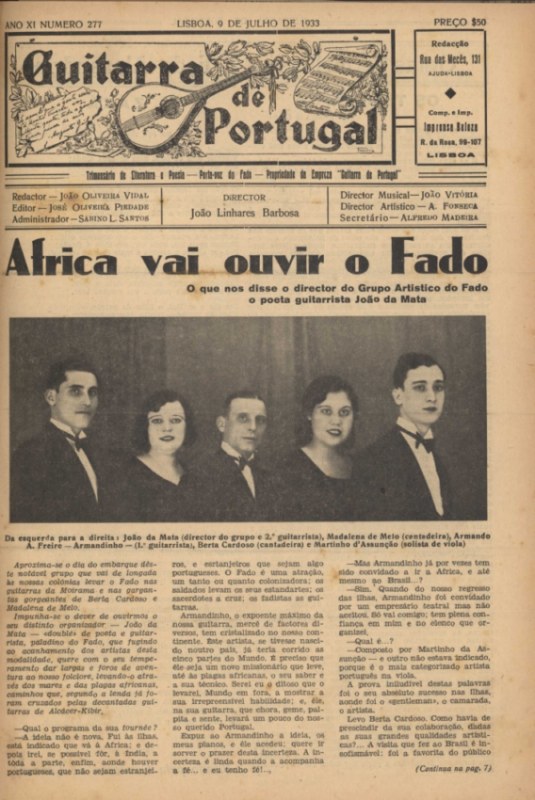Know more:
Armandinho
(N. 11 October, 1891 - M. 21 December, 1946)Armando Augusto Salgado Freire was born in Lisbon at Pátio do Quintalinho, close to Rua das Escolas Gerais, in Alfama, on the 11 October 1891.
His father taught him to play the mandolin, but he became interested in Portuguese guitar at 10. Four years later, in 1905, he made his debut in public, in Teatro das Trinas, thus beginning his career as musician – a profession in which he would be known as Armandinho.
His career had a boost in 1914, when he met the most famous Portuguese guitar player of that time - Luis Carlos da Silva, also known as Luis Petrolino, and became his pupil. He also kept other professions, like shoemaker, cabin boy, worker at the Companhia Nacional de Fósforos, helper at Casão Militar and controller at Mercado da Ribeira.
Armandinho made his debut in public in 1905, at only 14, in the old Teatro das Trinas, in the Lisbon district of Madragoa. But his debut as professional Portuguese guitar player took place at the Olímpia Club, in Rua dos Condes, accompanied by João da Mata Gonçalves (Spanish guitar).
In 1925 he accompanied fado singers at Solar da Alegria, a cult place for fado lovers who often went there to relish at Armandinho’s "impromptu" shows, or to hear him play the compositions of his Master, Luis Petrolino.
He recorded his first disc in Portugal in 1926, on a moving coil microphone. Accompanied by Georgino de Sousa on Spanish guitar, he recorded six compositions for His Master’s Voice – financed and sold in Portugal by Valentim de Carvalho.
Two years after, in 1928, also accompanied by Georgino de Sousa, in two sessions held at Teatro São Luís, Armandinho recorded a set of fado songs, variations of a march in different tones, once again published on the 78-rpm format. These tracks were re-published on CD by the Heritage label in 1994.
Armandinho was one of the first musicians to undertake artistic tours outside the Portuguese mainland. In 1922 he announced a journey to Spain and England with João da Mata Gonçalves (cf. "Guitarra de Portugal", 4 November 1922). From 1932 to 1933 he toured the Portuguese islands, Angola and Mozambique, accompanied by the same Spanish guitar player and also by Martinho d'Assunção, Ercília Costa, Berta Cardoso and Madalena de Melo.
As he himself said, in 1936, on the magazine "Azes do Fado": "We set up a small group, which was warmly welcomed, i.e. Ercília Costa, João da Mata, Martinho de Assunção and I. Later on, encouraged by this successful first flight, we organized a tour to Africa (...). We travelled along the West and East Coasts. (...). The third tour I joined, perhaps the most important, both in number of artists and repertoire, took us to Brazil, Argentina and Uruguay. It was the Fado Embassy, an illustrious embassy which included, in addition to my humble person, Maria do Carmo, Maria do Carmo Torres, Lina Duval, Branca Saldanha, José dos Santos Moreira, Alberto Reis, Felipe Pinto, Joaquim Pimentel and Eugénio Salvador." In this last tour Lina Duval and Eugénio Salvador performed some choreography.
A self-taught musician, he plays by hearing and he is also a composer of outstanding melodies, in addition to being a great performer. He was the author of many still extant fado songs and variations and he created themes that became “classics”—i.e. "Fado Armandinho", "Fado de S. Miguel", "Fado do Cívico", "Fado do Bacalhau", "Fado Mayer", "Fado do Ciúme", "Fado Estoril", "Variações em Ré Menor", "Variações em Ré Maior", "Ciganita", "Fado Fontalva", "Fado Conde da Anadia" and many others.
According to the musician, his first composition was "Fado Armandinho" and, for the theatre stage, "Fado do Cívico", a song interpreted by Estêvão Amarante in vaudeville "Torre de Babel", performed at Teatro Apolo in 1917. Also for this theatre he composed "Fado do Bacalhau", performed by José Bacalhau, which was followed by many collaborations.
He accompanied innumerable fado singers, in live shows, in fado houses and in recordings. Special reference should be made to Alberto Costa, Maria Vitória, Ângela Pinto, Adelina Ramos, Berta Cardoso, Madalena de Melo and Ercília Costa, among many others.
Armandinho performed at the most famous fado houses in Lisbon. In 1930 he became an impresario and set up his own place at Parque Mayer, called the Salão Artístico de Fados, where he played guitar for a few years. Soon however he became aware that he would not have enough time for tours and shows and abandoned the project. He also performed at private homes, namely at those of nobility like the Burnay, Fontalva and Castelo Melhor families.
In addition to João da Mata, Georgino de Sousa and Martinho d'Assunção, other major Spanish guitar players performed with him – namely Abel Negrão, Fernando Reis, Santos Moreira and Pais da Silva.
His performances are smooth and subtle, including pianos that he played on the Portuguese guitar with his own nails. For certain timbre effects he used the sordino. Armandinho turned out to be a landmark player of Portuguese guitar. He set up a “school”, in which he was followed by other great names like José Marques Piscalareta, Carvalhinho, José Nunes, Jaime Santos, Raul Nery and Fontes Rocha, among others.
As a Portuguese guitar player, he had a technique adapted to each fado singer he accompanied, creating a kind of dialogue which evidenced the special interpreting features of each singer and allowed him to play on equal foot with them. He thus managed to avoid diminishing the Portuguese guitar, a situation that became otherwise very common in the first decades of the twentieth century. His interpreting was so strong that he inspired the following quatrains of poet Silva Tavares:
Armandinho died on the 21 December 1946 at his home, at Travessa das Flores, in Lisbon. He left the fado people in mourning, as written on the cover of the newspaper "Guitarra de Portugal" edition of 1 January 1947. He left a widow and one son, also a Portuguese guitar player - Armindo Freire.
He was one of the founding members of the Sociedade de Escritores e Compositores Teatrais Portugueses, in 1927. He thus took the responsibility for collecting many fado melodies and registering their authors in the said society, a fact that enabled us to know today many of those melodies.
The Lisbon Town Council, by Edict of 1 August 2005, gave the name of Armandinho to a street in the district of Marvila.
Source:
“Guitarra de Portugal”, 4 November 1922;
“Guitarra de Portugal”, 12 June 1931
“Guitarra de Portugal”, 31 July 1933;
“Guitarra de Portugal”, 1 January 1947;
Cabral, Pedro Caldeira (1999), "A Guitarra Portuguesa", Col. "Um Século de Fado", Lisboa, Ediclube;
Guinot, Maria, Ruben de Carvalho e José Manuel Osório (1999) "Histórias do Fado", Col. "Um Século de Fado", Lisboa, Ediclube;
Rodrigues, Mário (1936), "Armandinho: sua vida - sua história", in "Azes do Fado", Ano I, nº 2, 15 de Fevereiro;
Sucena, Eduardo (1992), "Lisboa, o Fado e os Fadistas", Lisboa, Vega.
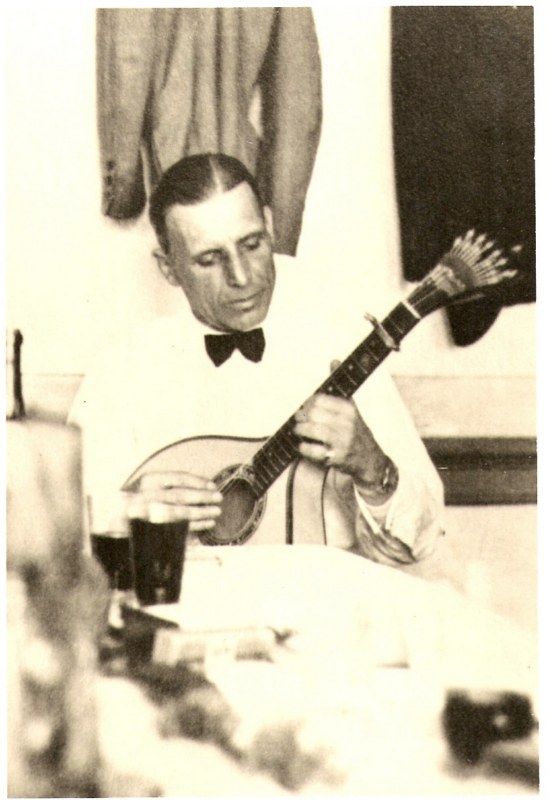
Armandinho s/d.
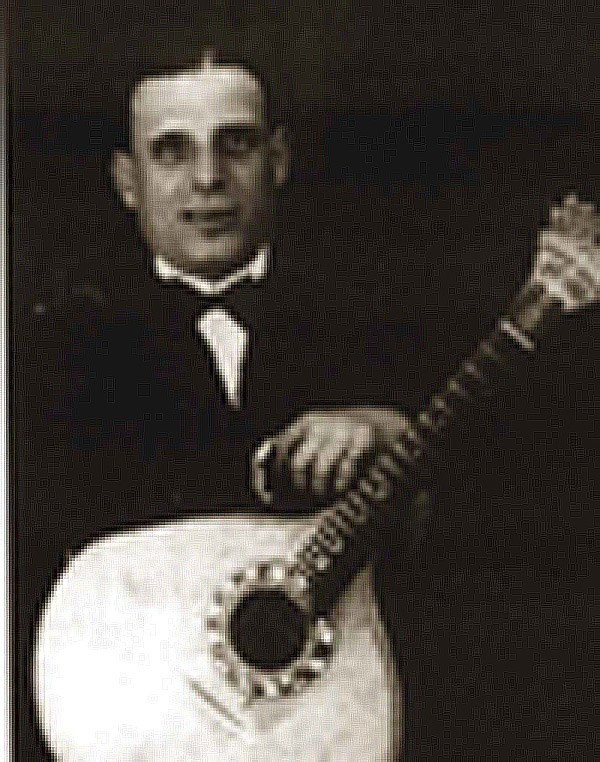
Armandinho 1933
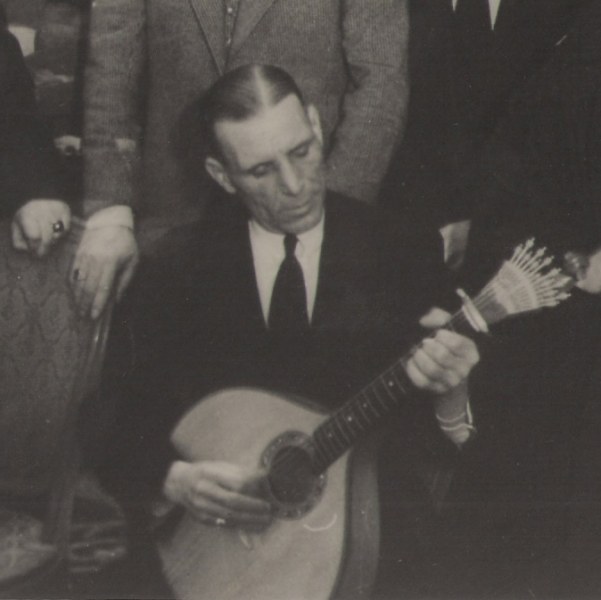
Armandinho s/d.
-
Fado Magioli Armandinho (Armandinho)
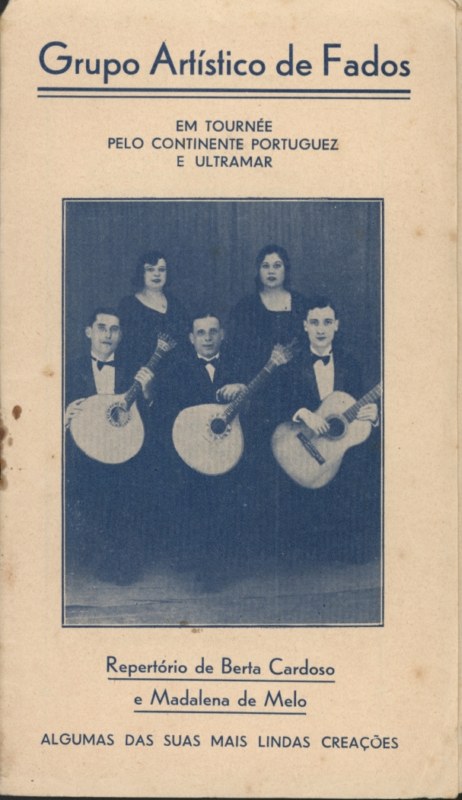
Folheto de Repertórios | Song Lyrics Brochure, Grupo Artístico de Fados, s/d.
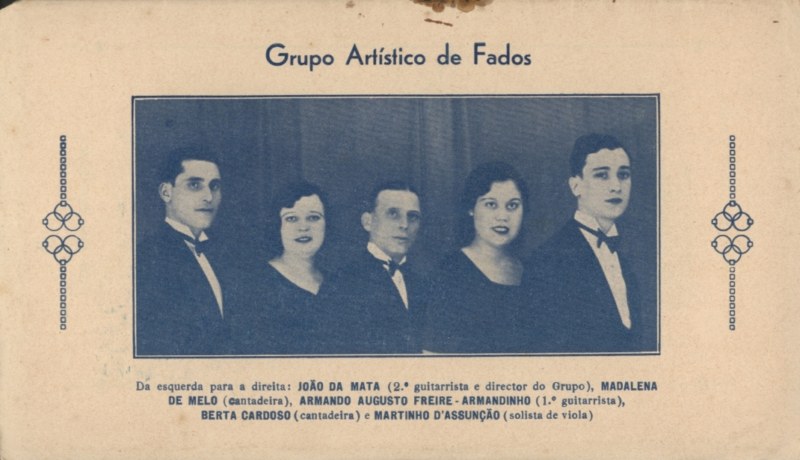
Folheto de Repertórios | Song Lyrics Brochure, Grupo Artístico de Fados, s/d.

Teatro Aveirense, Aveiro, 1939
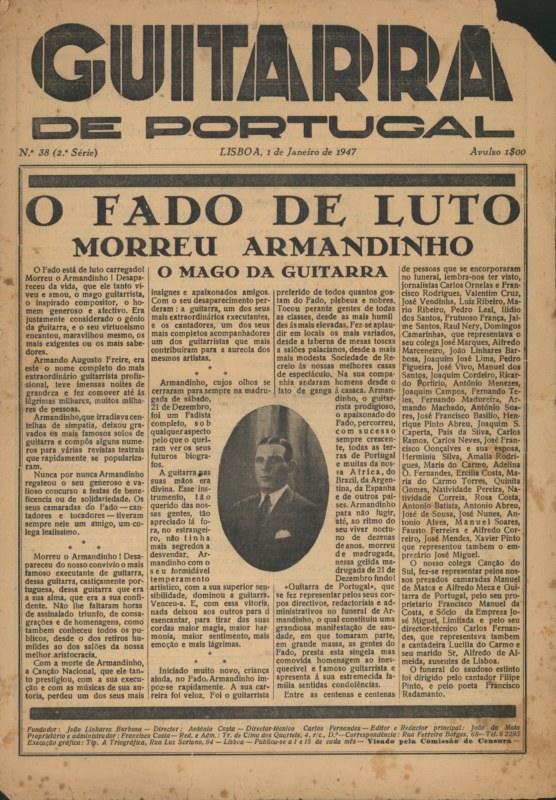
Guitarra de Portugal, 1 de Janeiro | January 1947
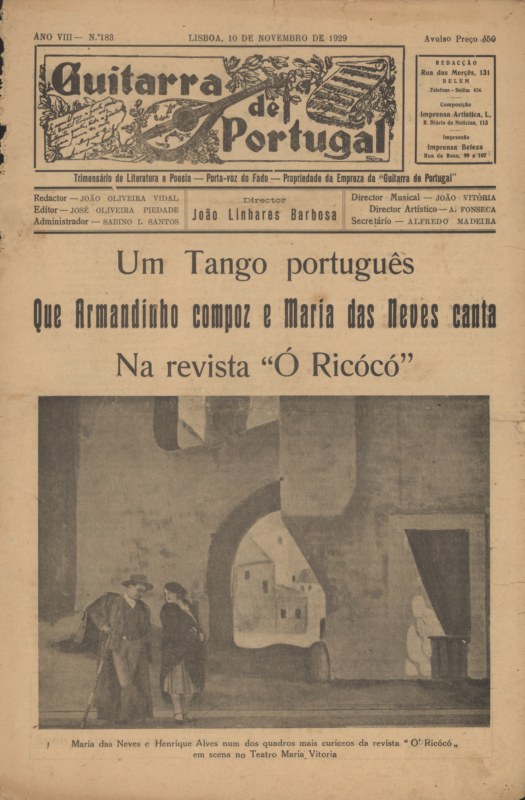
Guitarra de Portugal, 10 de Novembro | November 1929

Guitarra de Portugal, 10 de Novembro | November 1929, p. 2

Guitarra de Portugal, 13 de Junho | June 1927
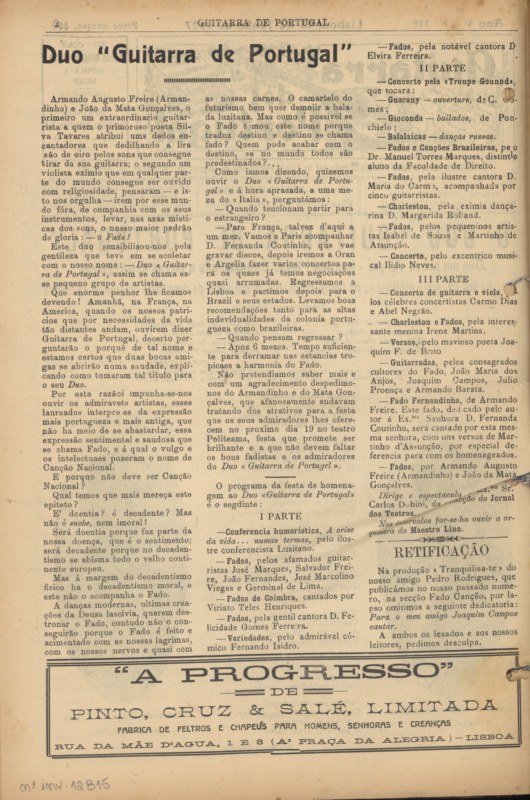
Guitarra de Portugal, 13 de Junho | June 1927, p. 2
